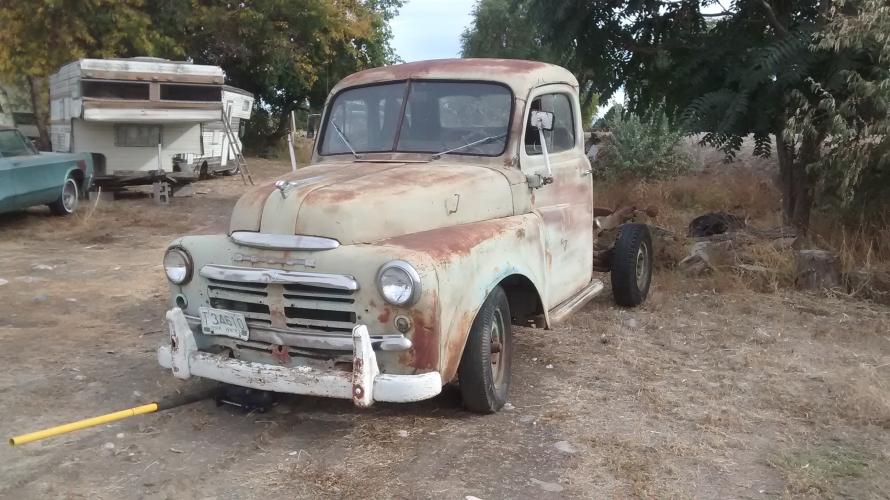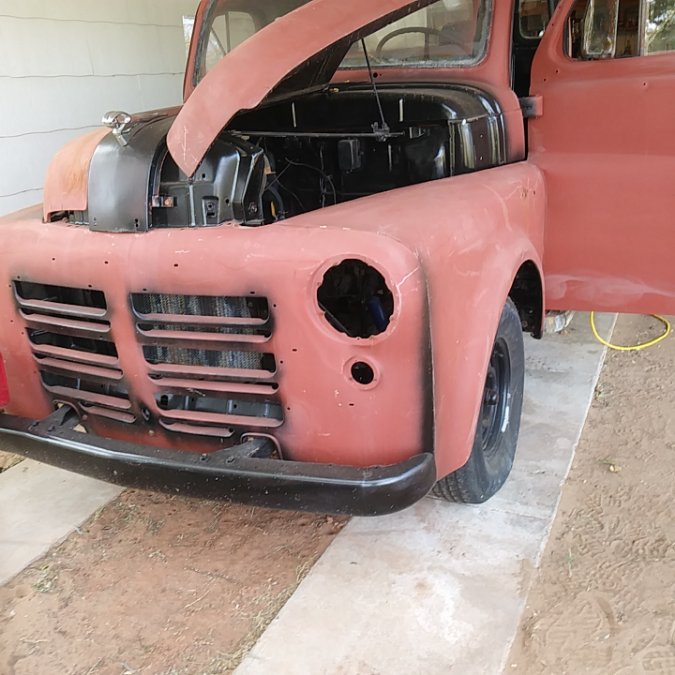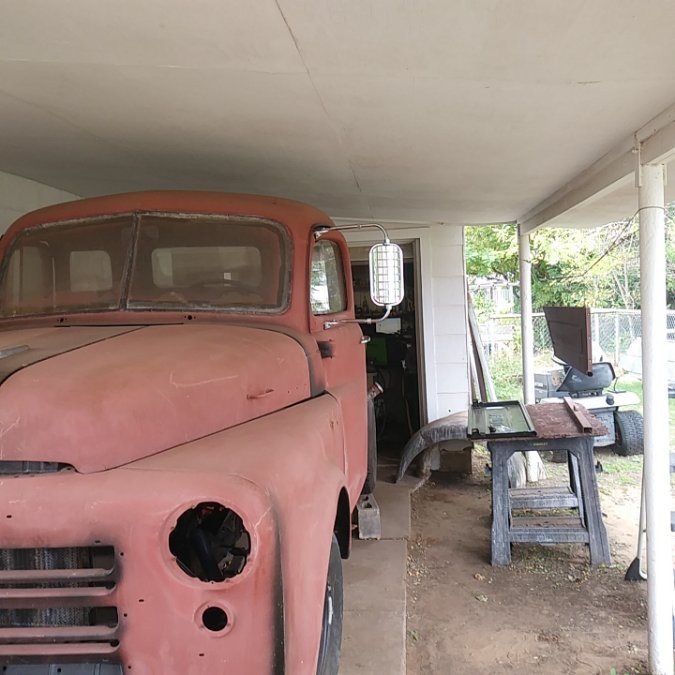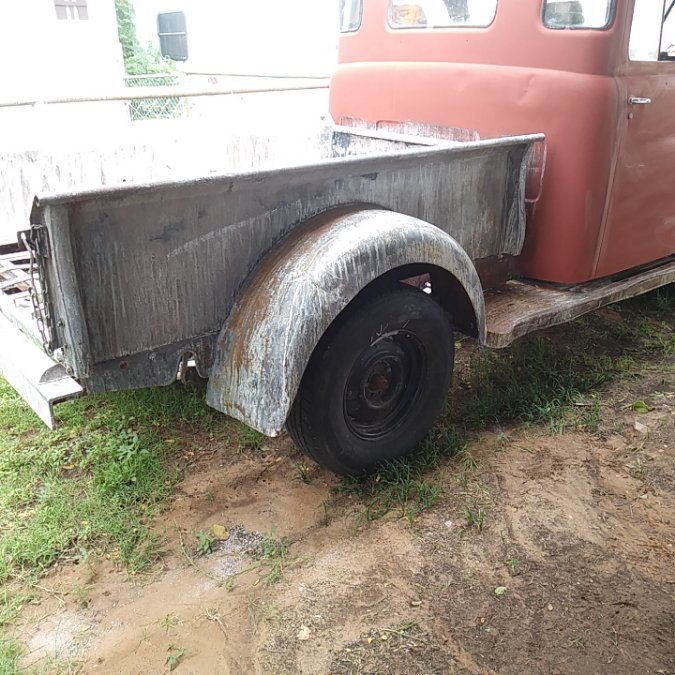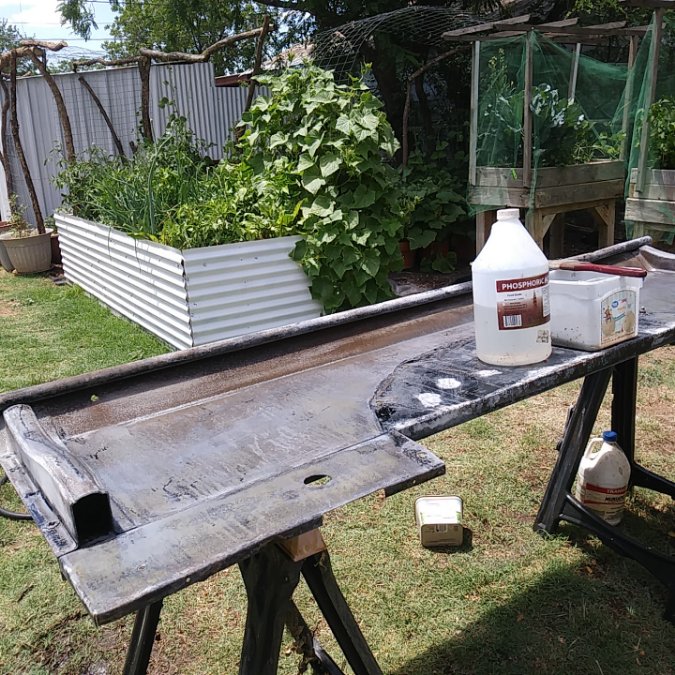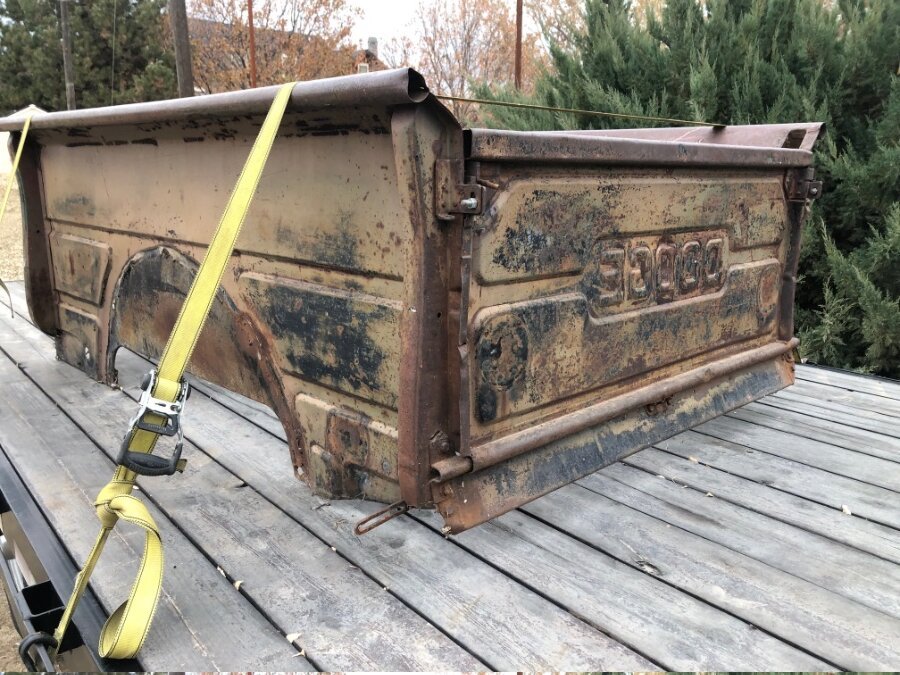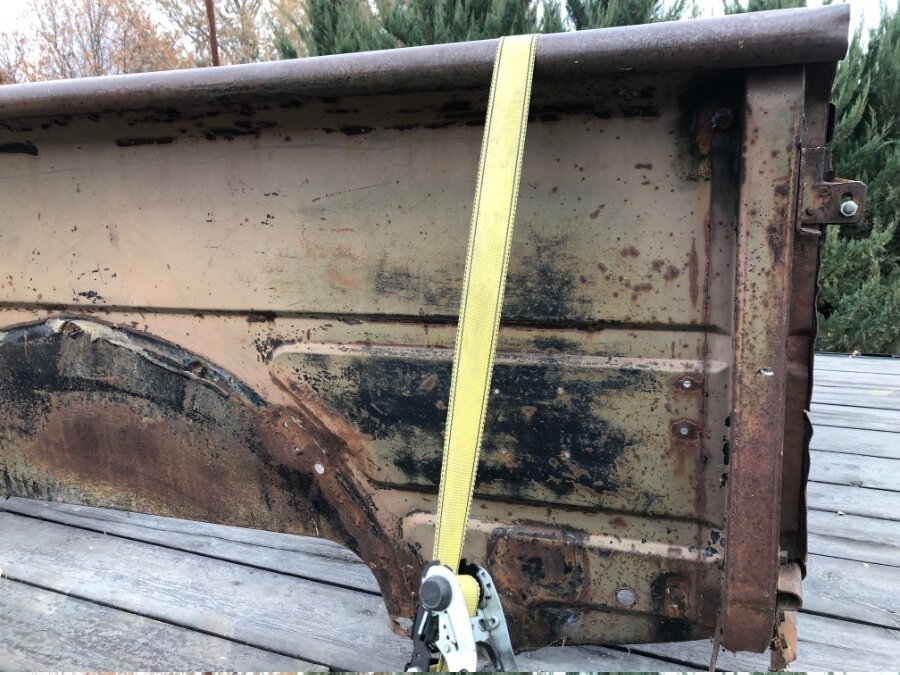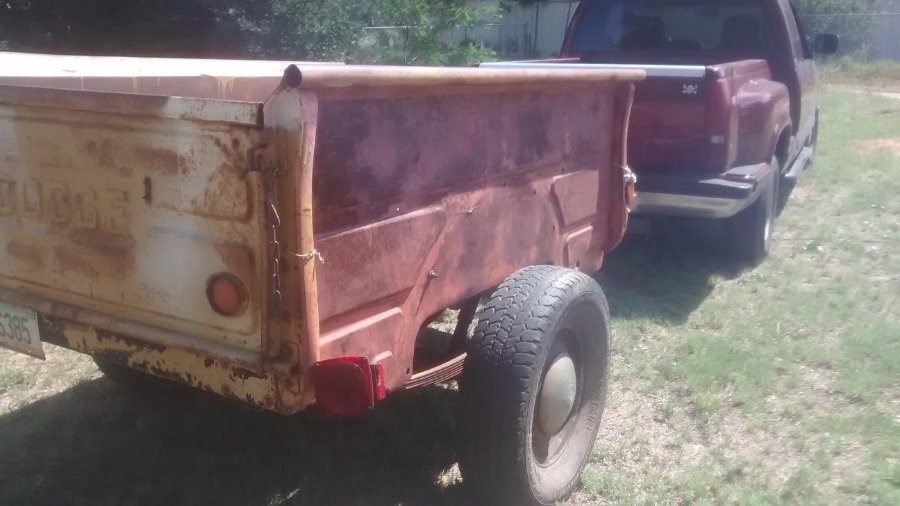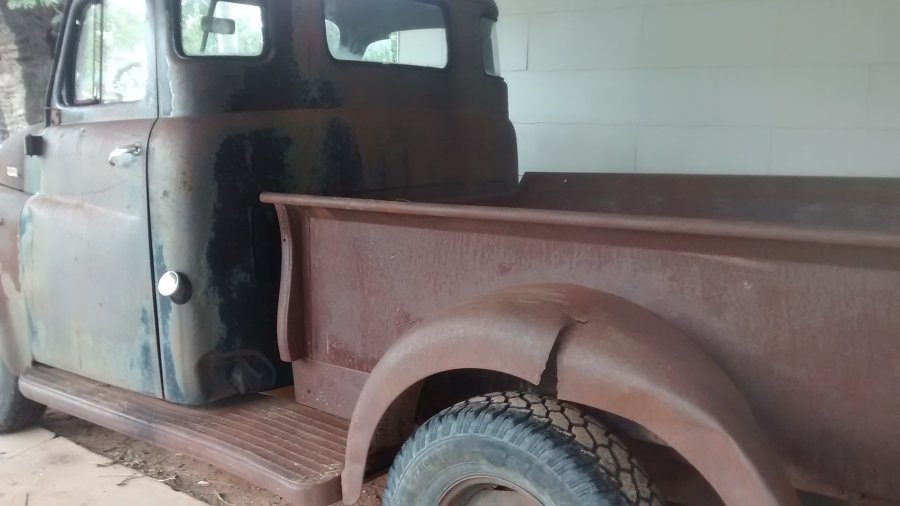-
Posts
4,734 -
Joined
-
Last visited
-
Days Won
37
Content Type
Links Directory
Profiles
Articles
Forums
Downloads
Store
Gallery
Blogs
Events
Everything posted by Los_Control
-
Rule #1 ..... WE LIKE PICTURES!!! Your plan sounds great ..... I would not count on using the original tapered axle rear end. ..... You can, I doubt the small hemi would break it. Working with the tapered axle is a pia, finding stock replacement brake drums is a pia .... there is a guy who sells re-pops for $400 each on ebay. That is the curse of building a older Mopar .... parts availability. A Ford Explorer 8.8 or a Jeep cherokee Dana rear end is readily available in a wrecking yard, they have a wide selection of gear ratios .... they are cheap, easy to get parts for, they share the same wheel bolt pattern as your car ..... they are the correct width, or close enough. IMHO, if you are going to swap in newer motor/trans, I suspect you will need to build/modify a drive line to fit, build your braking system ...... I would change the rear end while at it. ..... There are front disk brake conversions available & advice from others on getting top performance from existing front end. As far as your motor selection ..... I say choose whatever floats your boat.
-
DCM classics has the gas pedal https://dcmclassics.com/46-1948-1953-b-series Fuel pump I bought from Napa .... I did buy a water pump & carburetor, other parts from rockauto. Availability of parts change over time though .... RA no longer have the carbs available ... rebuild kits are available from several suppliers. Tanks is one solution for a new fuel tank. No idea what condition your existing tank is in .... if it is original 70 years old, might be easier to replace it for $300? I bought my tank & sending unit a few years ago for $250 for my 1949 .... Inflation. They do not have a exact fit for your year. They sell a tank for a 1947 Dodge ..... The difference is the rear mounting location. Up to 1947 the 1/2 ton trucks the fuel tank mounts to the rear cross member. 1948-1950 1/2 ton trucks also mount to rear cross member. The difference is 1948 they moved the rear cross member back a few inches. So 1948 has a longer tank. The front mount & fuel neck stays the same ...... is only the rear mount that is different. This is only for the 1/2 ton trucks!!!! 3/4 ton trucks & larger have a longer wheel base and the cross member is moved further back ..... The factory made a rear mounting bracket for the fuel tank. You only need to grind off the 2 rivets holding the bracket to the frame, relocate it to where it works with the 1947 tank. The modification needed is so minor, "Tanks" was not going to spend the $$$ to stamp out a new tank for 48-50 trucks .... the 1947 tank will work fine for you. https://www.tanksinc.com/index.cfm/page/ptype=product/product_id=349/category_id=68/mode=prod/prd349.htm There is a tank on ebay for your year for $640 .... I would rather save $300 & grind 2 rivets.
-
Looks like TP23 could be a 1960 230 CI. https://www.t137.com/registry/help/otherengines/19581968engines.html
-
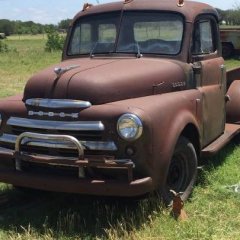
Removing ‘36 1/2 ton truck bed
Los_Control replied to Rodney_Hamon's topic in Mopar Flathead Truck Forum
Just went out to look at a utility trailer I have ... (48-50 year) It had 10 hooks on it ... 4 down each side & 2 on tailgate. My 49 truck had 4 eye bolts on it. 1 in each corner of the bed. .... Hooks are better. Also both beds had 2 reflectors on the tail gates. I just think adding the hooks & reflectors was common at the time. I plan to weld up the big eye bolt holes in my bed, add hooks and replace the reflectors with new. Not factory, just a common upgrade people did back in the day. -
Good neighbor to have
-
Can be many things .... My first thoughts is fuel delivery. Closing the choke is shutting off air which enriches the fuel. Possible a failing fuel pump can deliver enough fuel to run fine at idle, fill the float bowl .... But going down the road it just cant keep up. Might take a couple miles to drain the float bowl. Then with the small amount of fuel being delivered ..... closing off the air/choke it runs but without enough fuel to give normal power.... Another possibility would be a plugged pickup tube in the tank .... some obstruction in the fuel line .... plugged filter? Could be electrical also .... does the coil get hot when this happens? .... Should be warm, too hot to touch I would replace it. <--- first thing I would check Just a couple ideas to get you going.
-

1957 Dodge D100 6-cylinder rear (center) brake hose
Los_Control replied to elane352's topic in Mopar Flathead Truck Forum
That is good advice .... I was just looking at my rear line on the shelf saw the part # was different then the rear line for @elane352 1957. Then I remembered I ordered 3 front lines & what I'm using on my rear. ..... Probably for this very reason. -

1957 Dodge D100 6-cylinder rear (center) brake hose
Los_Control replied to elane352's topic in Mopar Flathead Truck Forum
For my 1949 I bought my hoses from rockauto .... sure there are many other places also ... mine fit fine and do what they are advertised to do. https://www.rockauto.com/en/catalog/dodge,1957,d100+pickup,3.8l+230cid+l6,1488512,brake+&+wheel+hub,brake+hose,1792 Just a thought, maybe you can get the part # from RA & then have your local autoparts store translate it to something they have in stock ... NAPA is pretty good about being able to go back to the early years for part # -
What I have read & been told, it kills the rust & stops it from getting worse while creating a paintable primer .... is this really true? What gives me hope is this one truck here. If you look at my avatar & see my truck as it was pulled out of a field .... We call it a Texas suntan .... paint is just burned off from the sun. I tried everything I could to mechanically remove the rust .... including 32 grit paper on a 4.5" grinder ... all it does is polish the rust. Acids while disgusting, was the only way for me to remove the rust at home. This truck is also a Texas truck that had some good suntan going on. This paint was 7 or 8 years old .... He went to a car show & saw someone copied his paint scheme, so he re-painted it & has different wheels now. ...... He just used ospho on the surface rust 10 years ago. I took this photo 2 years ago This photo a few weeks ago ... It is dirty & needs a bath, there is no rust coming back These are not "that kind of build" I would not suggest it for something being restored. After 2 years on my truck .... 10 years on the other truck .... I'm fairly confident with it.
-
I would be interested in looking at some of that .... My thought with the inner tube, they are already formed in a circle & easy to cut with a pair of scissors. You would want to use some sort of contact glue or sealer to glue one side of it to the fender .... easier to install. Tire shops will install new tubes with new tires .... The used ones are often sold cheap as "swim tubes" The ones that will not hold air are thrown away. I personally would like to have some of that rubber material around for many different uses ... just have it available. .... I would use it as a fender gasket. I have never used seam sealer before ... I bought some to seal up the floor in my cab after I weld it in, I have other ideas of where I might use it. @ggdad1951 mentioned using body caulk, I just assumed they were the same product. Maybe seam sealer is not a good idea to use as a gasket?
-
There was nothing proud of the seam on mine either, but there was some form of gasket material "welting" I used a heat gun to soften it up & a scraper to remove it. .... It was pretty uniform in width & thickness, making me believe it was a gasket of sorts & not caulk. I imagine its purpose was to prevent squeaks & rattles. I have been thinking about going to a local truck tire repair shop in search of old inner tubes to be thrown away. Make a gasket from that. Seam sealer does sound like a good idea also.
-
I have never needed to use wheel spacers. .... I would feel fine using them as long as they are quality made. I watched this guy build this truck on youtube, I know he has been driving it for over a year pulling a large trailer .... it is a solid work truck. It is a 8 lug Dodge 3/4 or 1 ton axles with semi truck super singles 22.5 wheels mounted using the magic of wheel spacers. Not sure if this would be considered severe Duty use .... they certainly do work if built right ..... these were built by his buddy who has a machine shop.
-
I have watched 1 or 2 of their videos .. I liked this one showing installing glass without rubber. I think the main issue is what is available for them & what we have available . I love what he does with what he has to work with ..... I'm just not certain I would do the same things he does.
- 1 reply
-
- 1
-

-

1951 dodge Coronet wheel bearing preload torque
Los_Control replied to nr1freak's topic in P15-D24 Forum
I think no matter what you do, when you put it back together .... then you drive it .... there will be some clearance that magicaly appears. The books I read, they always said to lock them down then back them off. .... I claim to be a young man born in 1962 .... this method has never failed me. It is not a certain torque .... it is spin the wheel til it stops .... then imho I give it just another 1/4 turn to lock it down. I read this method in a book somewhere .... been using it for 50 years ...It does work & just used it a few months ago on my daily driver. Any play in your wheel bearings will show wear on your tires, also possibly in the steering wheel ... The bearings will run hot & wear out early. Why we need to check them & grease them every couple years .... -

1951 dodge Coronet wheel bearing preload torque
Los_Control replied to nr1freak's topic in P15-D24 Forum
My method is to actually tighten the castle nut until the bearing does not want to turn. The goal is to get all pieces set into position. Then back off on the castle nut so the wheel spins freely, while there is zero play in the bearing if you grab the top & bottom of the tire & try to rock it back & forth. You want the bearing to spin freely, you do not want any play in the bearing. ..... this method I can spin my wheel freely with no drag or movement on the bearing, I can see just a bit of movement on my king pins showing some wear there .... Properly adjusted wheel bearing will show other wear on your front end. The tire up in the air is a big lever & you can check for all play in your front end. ... There is no exact setting for wheel bearings. -
Assuming the truck is not coming apart, ospho is a pretty decent product. Instructions for it, would be to use a wire brush & remove all lose flaky rust. Apply ospho to all surface areas & let it dry for 24 hours. Claims it will convert rust to a paintable primer that you can paint. I have bought it in a squirt bottle or a jug .... I find it best to pour a little in a throw away container & a cheap paint brush & brush it on. There will be some areas that you can not reach with a brush, a squirt bottle is good for the hard to get to corners. There are name brands of rust converter ... I'm sure Eastwood has a product along with all the other big guys .... Ospho you pick up at Ace hardware or Home Depot. The few forums I belong to, ospho seems to be the most popular. Here is a photo of when you spray it ... It is thick, inconsistent, runny ... it really creates a mess .... brushing it on is much better. There is some rust showing. I was playing with my pressure washer to see how easy it would be to clean up. It cleaned up & flash rust right away. If you are removing the fenders or body panels, I would suggest hydrochloric acid, also known as muriatic acid ..... This is what is used to clean swimming pools. YOU DO NOT WANT TO USE THIS ON YOUR TRUCK! It does work great, but the fumes will flash rust things on your truck like the choke cable, or your gauge bezels ... things you do not want to harm. If you do it out in the back yard away from the garage so you do not flash rust your tools .... it is great. Here is the same bed side after it was cleaned with muriatic acid, now I'm wiping on a mixture of phosphoric acid & water to preserve it. 3 different acids 1, muriatic acid is the toughest rust breaker in town. You should wear a gas mask when working with it. 2, Phosphoric is pretty good and does a great job removing rust. This bottle is food grade for cleaning restaurant equipment, More safe to use. 3, ospho ... The main active ingredient is phosphoric acid, but has more ingredients to create a converter. Modern acids work great, You use the bad boys in the back yard. .... On your truck ospho is the mildest, but it actually works as it should & safe to apply on the vehicle. I think in the last 4 years I have made just about every mistake I can using acids.
-

54 door replacement saga! Any advice for me?
Los_Control replied to Radarsonwheels's topic in Mopar Flathead Truck Forum
Your drawing looks pretty accurate to me. My first thought here is rusted bolts, time to throw some heat at them. It is a pretty thick plate & decent sized bolts. ... If you break one you can drill it out ... just not the end of the world. I really would have to look at mine again, I know I dropped the plate, picked it up with the magnet several times before I finally got it bolted back in place. I know I cleaned mine & greased it .... so I assume it can come out. Realistically is almost impossible to get your head in position to actually see. Everything is done by feel. Just been over a year since I messed with mine. .... My bolts came right out. ..... get a breaker bar & a 3' cheater pipe .... time for them to move. -
Looks fairly decent to work with.
-
-
I replaced the short 18" bar with a 3' piece of 1/2" water pipe. ..... The engine stand is still not stable, I have way more control with the 3' bar when turning it over.
-
-
Difficult to give advice without photos. Just asking what you are starting out with??? .... Anything can be fixed if you are willing to spend the time. Sooo thats the skinny here .... media blasters is not even a option ..... What extra holes do you have? .... I have several also.
-
Sounds correct ... I think some of the chebby like my 1991 is the same with spacers. Was my Jeep with the Dana rear end that I played with .... It had a crush sleeve ..... My chebby has spacers, but it was different how it was setup. I really am looking forward to the future videos @keithb7 will post to see how these old mopars work. I can even share years ago I changed the "Hogs Head" on my 1961 Dodge sweptline. ..... Pull the axles & drop it out. Slap in a different one & install the axles ... Think it took 1 hour. I never disassembled a Hogs Head ... just replaced them. ....... This is not a simple job to rebuild one .... looking forward to see it.
-
I'm looking forward to see how it turns out. ..... The rear ends scare me with all the special tools needed to properly set them up .... maybe our old rear ends not so picky? When I changed the rear pinion seal on a 1972 Jeep CJ5, the torque spec was around 250 ft# I had a co worker we called animal. He jumped at the chance to do the torque. I set the rear wheels on car ramps & parked a company service truck bumper to bumper so the jeep would not move. While Animal torqued the pinion nut. There is also a crush sleeve inside that needs this torque .... Then you need to use the goop to measure how the gears fit left & right ... forward reverse .... just way outside my wheelhouse .... I know Kieth can handle this
-
I was going to just post @Sam Buchanan reply in that thread, as far as re-using the head gasket ..... that could explain why #4 lost compression. There were some head gaskets you could re-use .... My1969 Triumph 650 motorcycle had a copper gasket you could anneal by heating it up to soften the copper & use it again. I do not think your head gasket is meant to use over again .... carry on.

